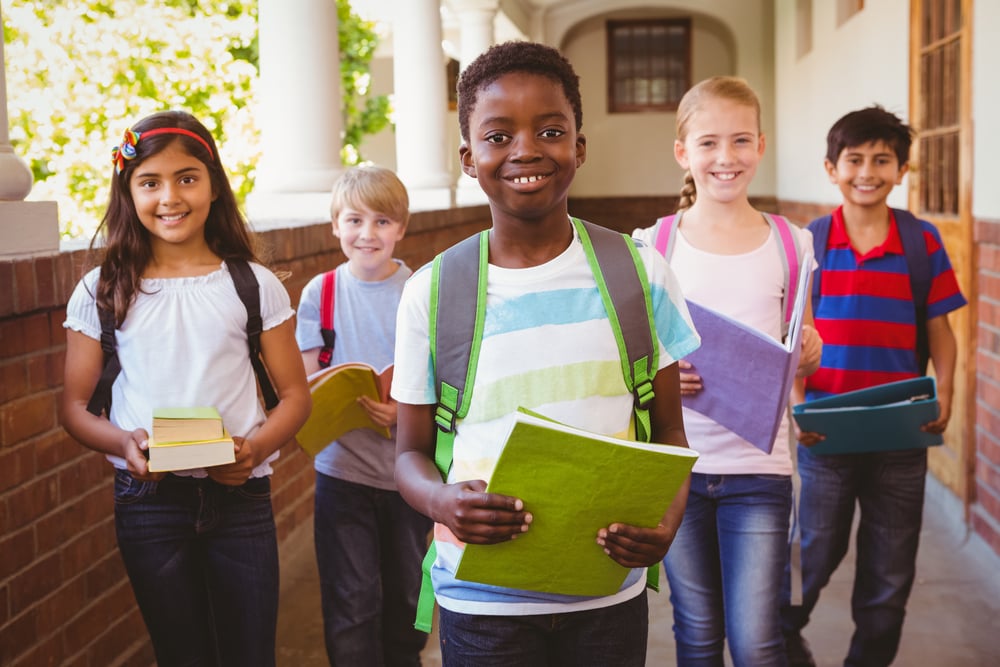Back to school during COVID-19
UPDATE: A couple of hours after we made this post, The Boston Globe reported on the plans that Massachusetts schools have submitted detailing how they will operate during the upcoming school year. According to the state, 30% of schools have chosen fully remote learning, but the other 70% plan to bring students back in person either part- or full-time. Some schools are offering hybrid learning, combining in-person and virtual instruction and allowing parents to choose fully remote learning for their children. All Massachusetts families are able to opt their children out of in-person learning if they deem it necessary.
As summer draws to a close, schools across the country are figuring out how to conduct the upcoming school year without putting children at risk. Some school staff and parents are eager to send kids back to school, while others are afraid of an increase in COVID-19 cases. We discuss what the CDC recommends for schooling and how the nation’s schools are planning to teach this coming school year.
What are the CDC guidelines?
Currently, the CDC recommends that schools reopen in the fall because of the importance of education and the school environment on children’s development and well-being:
The best available evidence indicates if children become infected, they are far less likely to suffer severe symptoms. Death rates among school-aged children are much lower than among adults. At the same time, the harms attributed to closed schools on the social, emotional, and behavioral health, economic well-being, and academic achievement of children, in both the short- and long-term, are well-known and significant. Further, the lack of in-person educational options disproportionately harms low-income and minority children and those living with disabilities.
In addition to academic growth, in-person learning facilitates students’ mental health and social learning, such as maintaining friendships, interacting with people outside their own family, group dynamics, managing emotions, and much more. This kind of social development is extremely difficult, if not impossible, to replicate virtually. While remote learning is an option for some, it’s often difficult for low-income students and students with disabilities or developmental delays.
School also often provides for the basic needs of students, particularly those from low-income households. In school, students have access to lunch and breakfast five days a week, social services, speech therapy, occupational therapy, and more. Teachers and other educational staff were responsible for more than one-fifth of all reported child abuse cases — more than any other category of reporter. After the COVID-19 school closures earlier this year, there was a sharp decline in reports of suspected maltreatment, but a notable increase in evidence of abuse when children were seen for services.
What are some strategies for reopening schools?
Every school is responding to COVID-19 differently. Some districts are going completely virtual, while others are going fully in-person, and still others are blending the two or allowing parents to make the decision for their child. The Massachusetts Department of Elementary and Secondary Education (Mass DOE) released a memo titled “Initial Fall School Reopening Guidance” on June 25, advising schools that they need to develop plans for how they will conduct the school year and submit them in August. The memo outlines what kinds of safety precautions schools need to have in place for in-person learning, recommendations for hybrid learning, and other information relevant to school officials and educators.
School cohorts or pods
One strategy the CDC recommends is placing students in cohorts, or small groups that stay together throughout the day and are not exposed to students from other cohorts. Students in cohorts still maintain social distancing from each other, but the isolation from other students provides an extra layer of protection from COVID-19. In addition, if a student contracts COVID-19, the number of people exposed is much smaller, resulting in easier contact tracing and more targeted testing.
Hybrid learning
The Mass DOE also advises that schools interested in hybrid learning create an alternating schedule with students switching between in-person and remote learning on alternating weeks or days of the week. Preliminary modeling shows that this kind of schedule can help reduce contact between students and staff and thus reduce in-school transmission. However, this kind of schedule could pose difficulties in regard to lesson planning, childcare, and other areas.
How can parents help their kids stay safe at school?
If your patients are going back to school or have children who are going to school either — part- or full-time — here are some tips for staying safe:
- Wear a cloth face covering
- Wash hands frequently with soap and water for at least 20 seconds, or use hand sanitizer that’s at least 60% alcohol
- Cover coughs and sneezes with a tissue or inside of elbow
- Avoiding touching the eyes, nose, or mouth
- Stay at least 6 feet apart from others when possible
- Limit the use of shared objects like physical education equipment and art supplies
